Issue Archive
Table of Contents
BLOOD COMMENTARIES
PLENARY PAPER
Poverty and relapse risk in children with acute lymphoblastic leukemia: a Children’s Oncology Group study AALL03N1 report
Clinical Trials & Observations
In this Plenary Paper, Wadhwa et al report on a secondary analysis of the Children's Oncology Group AALL03N1 study, correlating outcomes of acute lymphoblastic leukemia with Census Bureau data detailing household income. Among 592 patients, those with incomes below 120% of federal poverty thresholds (termed extreme poverty) comprised 12%. Those living in extreme poverty have a higher rate of relapse, only partially mitigated by a higher rate of nonadherence to maintenance mercaptopurine.
PERSPECTIVE
New ASH initiatives to improve patient care in the long-overlooked sickle cell disease
Clinical Trials & Observations
Progress in developing novel therapies for sickle cell disease has been slow, and infant mortality continues to be a major problem in low-income countries. In this Perspective, Tubman et al discuss the pressing need for the hematology field to better meet the needs of this often underserved population. The authors discuss efforts by the American Society of Hematology (ASH) to improve care and prognosis through the Clinical Trials Network and the Consortium on Newborn Screening in Africa and their potential to have a major impact on these patients.
CLINICAL TRIALS AND OBSERVATIONS
Eligibility criteria and enrollment of a diverse racial and ethnic population in multiple myeloma clinical trials
Clinical Trials & Observations
Kanapuru and colleagues examine the underrepresentation of racial and ethnic subgroups in multiple myeloma clinical trials. The authors report that Black patients and other racial and ethnic subgroups had higher ineligibility rates than White patients. This was partially explained by the failure to meet hematology lab criteria (most likely related to Duffy-null–associated neutrophil count) but also by failure to meet treatment-related criteria (likely related to inadequate access to care for previous first- and second-line therapy). These data suggest that achieving diversity requires reevaluation of eligibility criteria.
Equality: trial and error?
Clinical Trials & Observations
HEMATOPOIESIS AND STEM CELLS
Spectrum of clonal hematopoiesis in VEXAS syndrome
CME
VEXAS (vacuoles, E1 enzyme, X-linked, autoinflammatory, somatic) syndrome is a recently described disorder caused by mutations in UBA1 and is characterized by inflammation and hematologic disorders. In this month’s CME article, Gutierrez-Rodrigues and colleagues investigate the genomic landscape of myeloid-related mutations leading to clonal hematopoiesis (CH) in these patients. CH was detected in 60% of patients but correlated poorly with progression to myeloid malignancy. CH did predict for poorer survival, perhaps through inflammatory sequelae.
IMMUNOBIOLOGY AND IMMUNOTHERAPY
Preclinical characterization of ISB 1342, a CD38 × CD3 T-cell engager for relapsed/refractory multiple myeloma
Pouleau and colleagues present preclinical data on a novel bispecific T-cell engager for the treatment of relapsed refractory multiple myeloma.
LYMPHOID NEOPLASIA
STAT5 activation promotes progression and chemotherapy resistance in early T-cell precursor acute lymphoblastic leukemia
Early T-cell precursor subtype acute lymphoblastic leukemia (ETP-ALL) often has activating mutations affecting IL-7 signaling, which activates STAT5 signaling. Tremblay and colleagues characterize the role of STAT5 in ETP-ALL and identify STAT5B as a central promoter of expansion and chemoresistance of leukemic stem cells in ETP-ALL, suggesting it as a potential target for treating the disease.
THROMBOSIS AND HEMOSTASIS
Factor VIII trafficking to CD4+ T cells shapes its immunogenicity and requires several types of antigen-presenting cells
The major complication of factor VIII (FVIII) infusion for the treatment of hemophilia A is the development of inhibitors, which occurs in about 30% of patients. Little is known about the mechanism by which these antibodies are induced, although it is known to be T-cell dependent. Kaczmarek et al delineate the trafficking of infused FVIII to the spleen and characterize the subsets of antigen-presenting cells that lead to efficient delivery to white pulp dendritic cells that prime helper T cells. The authors suggest that FVIII may have intrinsic immunostimulatory properties that modulate this response.
CONTINUING MEDICAL EDUCATION (CME) QUESTIONS
-
Cover Image
Cover Image
![issue cover]()
Surface representation of the distinct epitopes of daratumumab (dark red) and ISB 1342 (green). CD38 representation comes from the crystal structure PDB 7DHA. See the article by Pouleau et al on page 260.
- PDF Icon Front MatterFront Matter
- PDF Icon Table of ContentsTable of Contents
- PDF Icon Editorial BoardEditorial Board
Advertisement intended for health care professionals
Email alerts
Advertisement intended for health care professionals


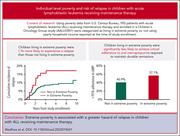
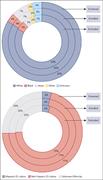
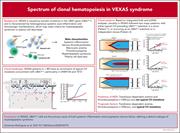
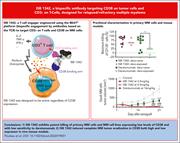
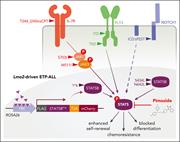
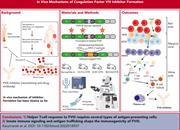

Poverty and health equity in childhood leukemia